6 Lent Meatless Friday Recipes, Latino-Style
- February 2022
- By Isabelle Banin
- Recipe from Everywhere Latino
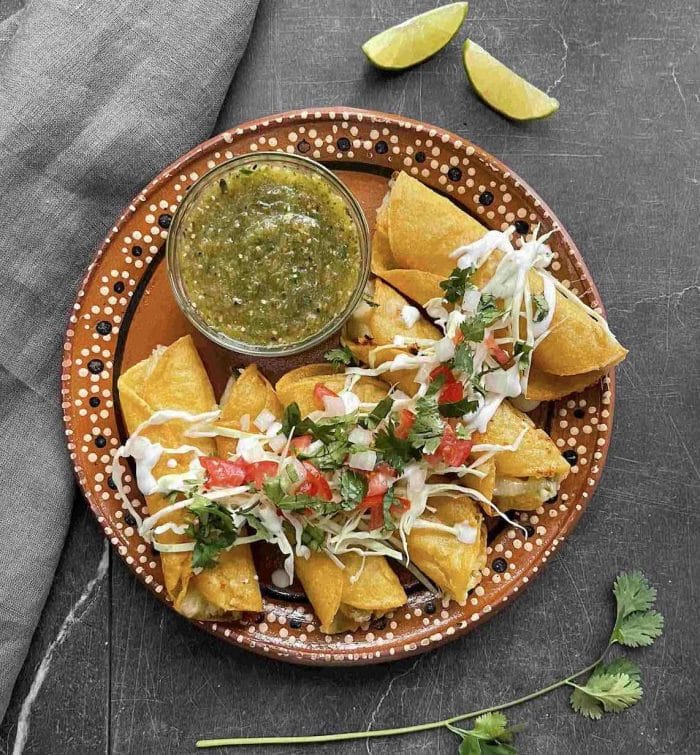
Looking for Lent meatless Friday recipes, like so many familias? During the six Fridays of the Lenten season — falling between Ash Wednesday Feb. 14 (Valentine’s Day!) and Holy Thursday, March 28 this year — fish and vegetarian dishes take center stage at the dinner tables of even the most dedicated carnivores.
Is your family one of the 60% of Latinos who are Catholic and annually observe this faithful food tradition? Or perhaps you cook meatless year round? Familia Kitchen is here to inspire your meal making with traditional and delicioso non-carne recipes from our community of Latino homecooks.
But before we showcase their family-famous dishes, you may be wondering: How did the tradition of abstaining from meat even start? Us too, and our research into the topic took us on a journey that starts with Easter’s pre-Christian roots.
The History and Early Food Rituals of Lent
The word Lent comes from the Old English “lencten,” which means: springtime. Since Easter always falls on the Sunday following the first full moon of spring, the name is seasonally fitting. To celebrate the spring equinox — when the days start to grow longer and darkness finally begins to give way to more hours of light — celebrations in medieval Anglo-Saxon England honored the goddess Eostre. Thanks to her, we have Easter.
But before the Pascual spring celebration, Christians are asked to first fast and repent. And so each year, Lent starts with the solemnity of Ash Wednesday, a holy day of penitence. The season ends 40 days later with a prayerful vigil on Holy Saturday, one last somber day before the festivities of Easter. (Why 40? This symbolic number was adopted in 325 CE in Rome by the Council of Nicea, a nod to the number of days Jesus fasted in the wilderness.)
Because eating meat is associated with celebration, Catholicism holds that abstaining from carne during Lent helps people connect with the sacrifice and death of Jesus. Fasting on Fridays became official in 604 CE, when Pope St. Gregory the Great proclaimed that during Lent, Catholics must abstain from “flesh, meat, and from all things that come from flesh, as milk, cheese, and eggs.” This ruling evolved over time, until just meat was left on the no-go list. In 1966, the United States Conference of Catholic Bishops affirmed that all Catholics 14 and over must abstain from meat on Fridays as a form of “voluntary self-denial” and ”by free choice as formerly we did in obedience to Church law.”
That was a big change: It was no longer a sin to eat meat on Fridays in general and Lent in particular. As a result, the Catholic tradition of fish Fridays has pretty much disappeared in our increasingly secular age. But, out of habit and faith, many Catholics still observe the call to ditch meat during Lent Fridays.
But First: Carnival Comes Before Lent
Before the fasting, there is one last blowout feast. In many Latino countries, the day before Lent is for carnival! The word is thought to come from the Latin carnem levare or carnelevarium, which means: to take away meat. Carnival historically served a practical purpose: The merrymaking helped use up all the church-prohibited foods before the start of Lent the next day: Ash Wednesday. It’s no wonder pre-Lent feasting is essential to carnival.
Old World Catholicism made its way to the Latino nuevo mundo with the arrival of Spanish conquistadors in the 1500s. This means Lenten traditions unique to Spanish-speaking communities (including no-meat Friday family recipes!) have had centuries to develop and become part of daily life.
Today, local Lent customs vary across Spanish-speaking communities. In some countries, families go to church daily during Semana Santa or Holy Week, and in others it’s all about the holiest of holies: the big Sunday Easter mass. In Perú, the Tre Ore on Good Friday commemorates the three hours Jesus hung on the cross, a ritual that originated during the 18th century. Throughout Mexico and other Latino countries, elaborate religious processions fill the streets and locals reenact the trial and crucifixion of Jesus in the days before Easter. All fasting ends by Easter Sunday, when churches are filled with music, flowers and families, who often gather afterwards to celebrate over a rich meal that likely includes a savory roast. Goodbye no-carne Fridays—until next year.
If your family observes Lent or you’re looking for meatless menu traditional inspiration, here are six Family Kitchen community family-favorite Lent recipes.
Lent Friday Recipe No. 1
Fish in Escabeche From Panama
One of our favorite Panamanian cooks, Lisa Kear remembers eating her grandmother’s pescado escabeche every Lent of her childhood in Colón, Panama. Since vinegar is a preservative, this Panamanian pan-fried pickled fish dish was made before the family left for church or evening processions—and was ready to eat when they returned, no matter the hour. Lisa recommends using the leftovers (if there are any!) for vinegary-sweet fish tacos.
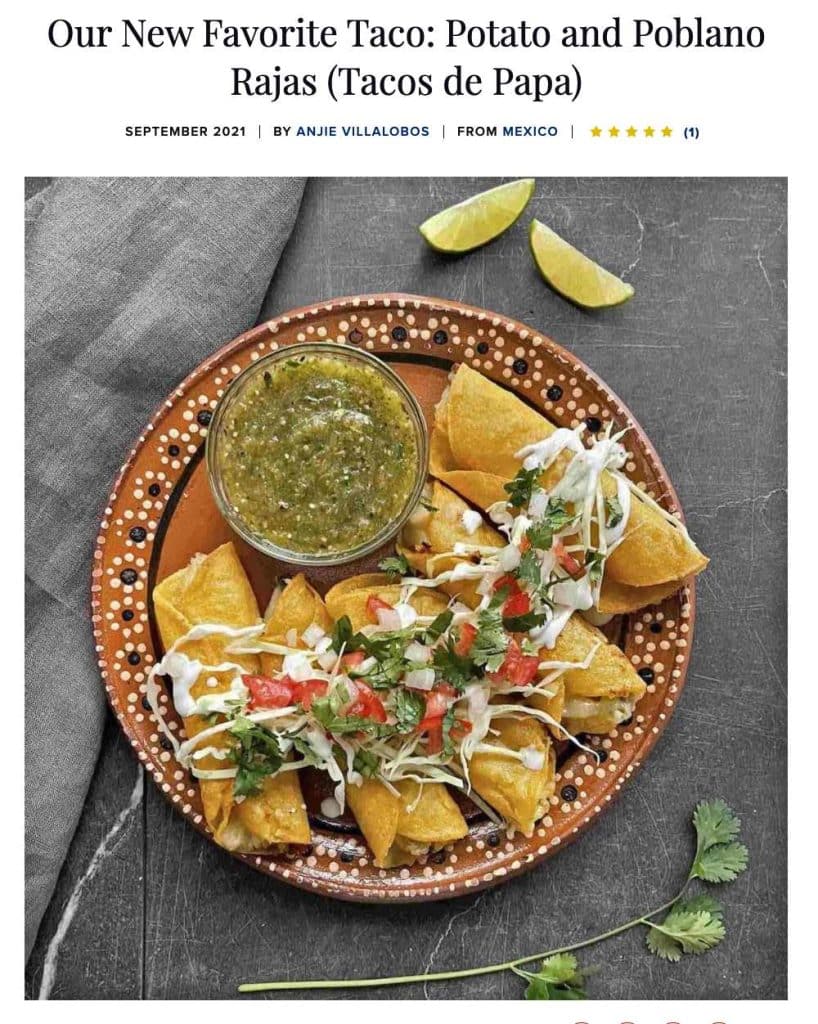
Lent Friday Recipe No. 2
Tacos de Papa and Poblano Rajas— Mexico
These tacos made with potatoes and roasted poblano chiles are hearty, filling, affordable—and meatless. They were shared with Familia Kitchen by one of our favorite Mexican-food cooks Anjie Villalobos, who learned this dish from her sister in law, China, who grew up in San Juan de Los Lagos in Jalisco. ”China came from a family of 15 brothers and sisters. So: huge family, lots of cooking always going on. Their family has a great love for food and for gathering.” Making potato tacos as opposed to meat tacos for a large family is an important part of cooking and caring for big groups of people you love.” Which makes these delicioso tacos a top choice for a Lent Friday large-family dinner.

Lent Friday Recipe No. 3
Fried Whole Fish — Colombia
This crunchy-delicioso pescado frito or fried whole mojarra fish is a favorite in the family of Colombian homecook Janeth Barrera, who lives in Chicago. One of the most traditional types of pescado to buy and fry in Colombia is mojarra, which looks like, tastes like and is often called (but is not) tilapia. Serving a whole fish makes for a memorably elegant meatless meal.
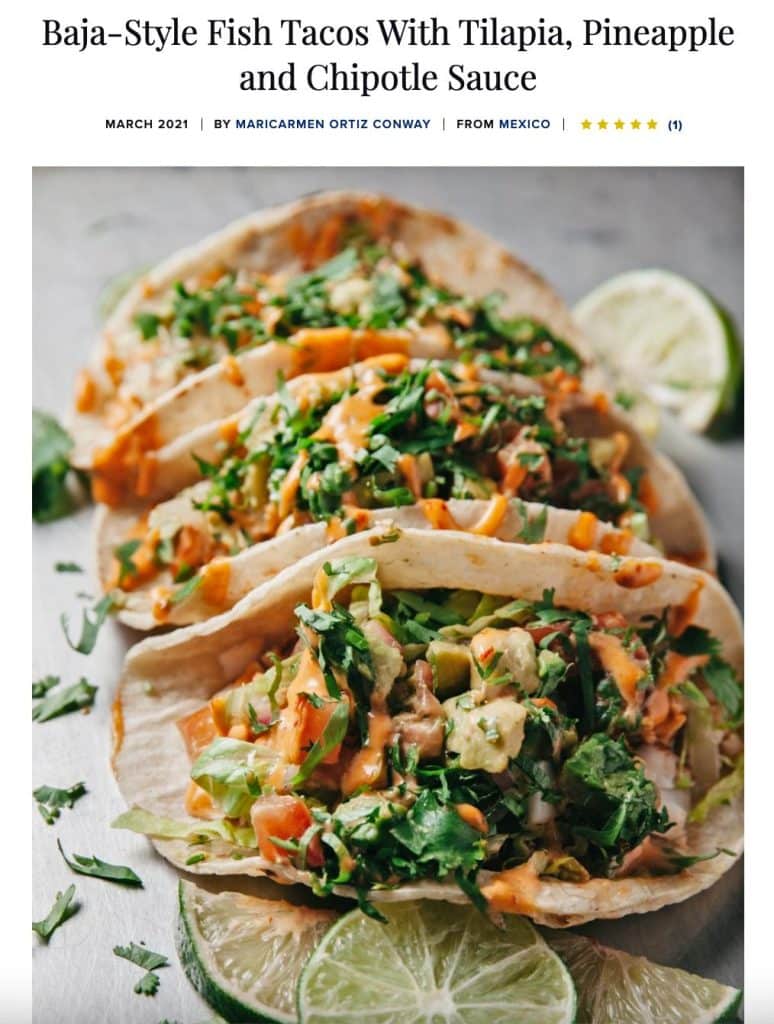
Lent Friday Recipe No. 4
Baja-Style Fish Tacos with Tilapia, Pineapple and Chipotle Sauce
These tasty fish tacos with Baja salsa were sent to Familia Kitchen by another of our favorite Mexican-food homecooks MariCarmen Ortiz Conway. She tells us: ”My family loves these Baja sauce-drizzled tilapia fish tacos, and I hope yours does too. There are many ways to prepare Baja sauce. This is my way: I use Mexican mayonnaise and add tomato puree for a great touch to the combination of flavors also including: pineapple, chipotle chile, and, por supuesto: the breaded pescado. I use tilapia, which is sweet, light and fresh-tasting and takes on the flavors of the chile and cilantro beautifully.”
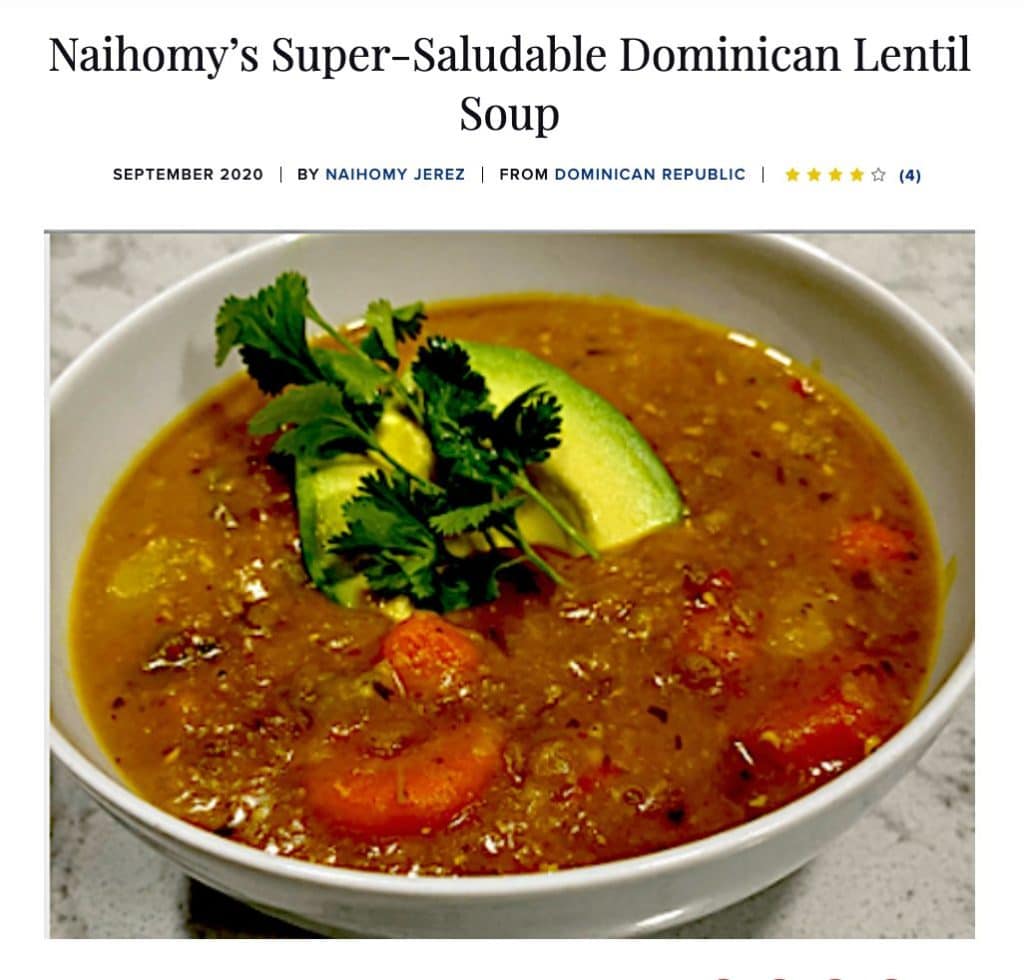
Lent Friday Recipe No. 5
Naihomy Jerez’s Dominican Lentil Soup
One of our favorite Dominican homecooks Naihomy Jerez’s criollo lentil soup is filling and sabroso! This dish is packed with vegetables, including carrots, yuca and auyama pumpkin. And the best part: More than 10 can be served from one batch. If you’re searching for a filling meatless meal to feed a big group, this soup is a healthy and delicious option, with enough usually left over for seconds the next day.

Lent Friday Recipe No. 6
Abuelita Toña’s Capirotada or Mexican Bread Pudding
This recipe for capirotada—traditional Mexican bread pudding made with bolillos, piloncillo, prunes, raisins, shredded coconut, and other sweet ingredients—was a star of her mother Toña’s Easter spread every year. It is delicious, hearty and the perfect traditional treat to fill the hearts and bellies of their fasting family and neighbors.
”We eat it on Easter Friday when we don’t eat meat,” says Naomi Rodriguez, one of Familia Kitchen’s favorite Mexican cooks. ”On Easter, my grandmother and mom would also make tortas de camarón with mole and nopales. And then the dessert would be this capirotada. This is a very traditional dish for Mexican people—and it’s amazing,” says Naomi.

Naomi, who comes from a family of bakers in East Los Angeles, keep the tradition going and makes her mother’s capirotada every Easter to honor her memory. In Celebrating Latino Folklore: An Encyclopedia of Cultural Traditions, Maria Herrera-Sobek explains that in this iconic Mexican bread pudding, the bread and syrup signify the body and blood of Christ, the raisins and cloves symbolize the nails on the cross, and the cheese represents the holy shroud. Clearly a dish with mucho meaning that has become a must-have at many families’ Holy Week gatherings.
One final Easter week dessert to inspire your comida planning. Habichuelas con dulce is a sweet bean treat beloved in the Dominican Republic and traditionally prepared on Good Friday, in anticipation of Easter. Check out these two versions sent in by Dominican cooks Naihomy Jerez and her mother Rosa. Her mom’s is made traditionally with sugar, and Naihomy’s flipped-to-Healthy & Delicioso version reimagines it with no sugar and dairy-free.
Which of these family recipes will you make for your Lent Friday meals? And when Lent is over, what will you make your family and friends for the Easter feast?
Stop by Familiakitchen.com for Semana Santa and Pascuas food ideas—whether you are abstaining from meat or feasting. You’ll find traditional recipe inspiration from all the Spanish-speaking places we come from.
This is how we cook our way home these Lenten six weeks—together.
MoreLike This



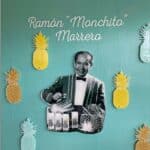



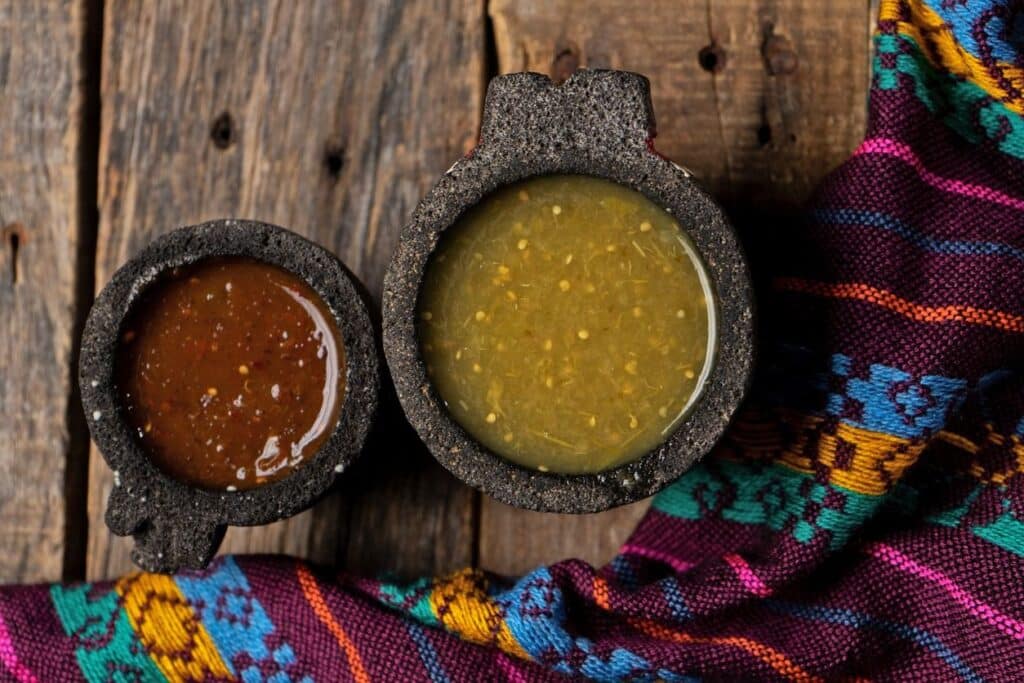


Got a question or suggestion?
Please rate this recipe and leave any tips, substitutions, or Qs you have!